Discover the Historical Side of Antalya in the Ancient City of Perge
In the Aksu district of Antalya, the ancient city of Perge, gleaming with its golden yellow stones under the Mediterranean sun, quietly yet majestically shares its thousands of years of history with its visitors. Dating back to the 2nd millennium BC, this ancient city was known as “Parha” during the Hittite period and became one of the most organised and impressive cities in Anatolia during the Hellenistic and especially the Roman period. Perge, which encapsulates the architectural and engineering marvels of antiquity, is now a unique open-air museum where archaeology enthusiasts and history buffs wander in admiration. So, where is Perge? How to visit Perge? What to do in Perge? And what to see in Perge? Let's explore together.👇
History of Perge: From the Bronze Age to Roman Splendour

Perge's rich history reaches back to the Bronze Age. This region, referred to as “Parha” in Hittite texts, has served as a stopping point for many civilisations due to its strategic location. In the Hellenistic period, the Pergeans established their own administration and made significant progress in city planning, and during the Roman Empire, it gained renown for its marble sculptures, architectural layout, and urbanism.
Perge also offers much insight into the cultural life of the period. Especially during the Roman era, the city was a hub of science, art, and sports. Numerous sculptures, reliefs, and inscriptions unearthed during excavations reveal that Perge was not only a living space but also a cultural capital. Many of these invaluable artefacts are now exhibited in the Antalya Museum, showcasing the elegant traces of the Perge sculpture school.
1. Hellenistic Gate and Walls
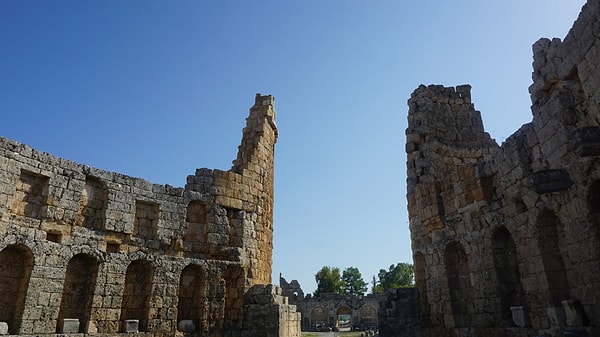
Built in the 3rd century BC, this gate is situated at the southern entrance of Perge and presents an impressive visage with its two round towers. Reflecting the city’s defensive systems of the Hellenistic period, these structures offer a journey through time as you step into the ancient city. The thickness of the walls and the symmetry of the towers provide clues to the defensive principles of the period.
Source: Kültür Envanteri
2. Roman Gate

The Roman Gate, located north of Perge, dates back to the 2nd century AD. With its triple-arched structure, intricate stonework, and façade adorned with reliefs, it showcases the grandeur of Roman architecture. This gate serves not only as an entrance point but also as a monument of victory. The inscriptions and reliefs on it provide insights into significant individuals and events of the era.
Source: Kültür Envanteri
3. Collonaded Street

This magnificent street, which forms the main axis of the ancient city, extends about 300 meters in length and 20 meters in width. The columns and remnants of shops on either side evoke the vibrant city life of the time. The water channel running through the middle of the street highlights the advanced infrastructure system in Perge, drawing attention as both an aesthetic and functional feature.
4. Agora

The Agora, the heart of the city, served as the centre of trade and social life. Enclosed by columns on all four sides, this square-plan structure, with a temple at its centre, bears significant traces of both the economic and religious life of the period. Inscriptions found in the agora provide information about merchants, professional guilds, and social organisations.
5. Theatre
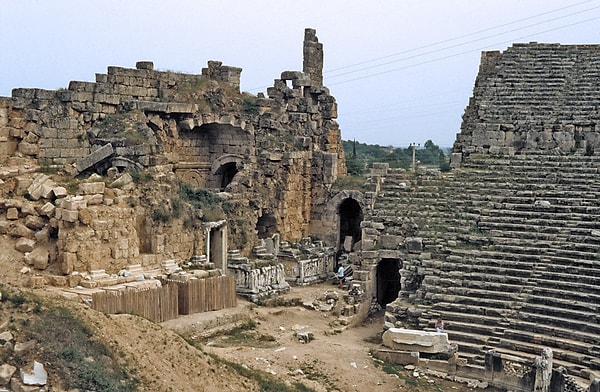
The Perge Theatre, located in the eastern part of the city, ranks among the largest in the ancient world with a capacity for about 15,000 spectators. Built in the 2nd century AD, this structure has remarkably survived to the present day. The reliefs on the stage building, adorned with mythological scenes, gods, and heroes, reflect the nuances of Roman art.
6. Stadium
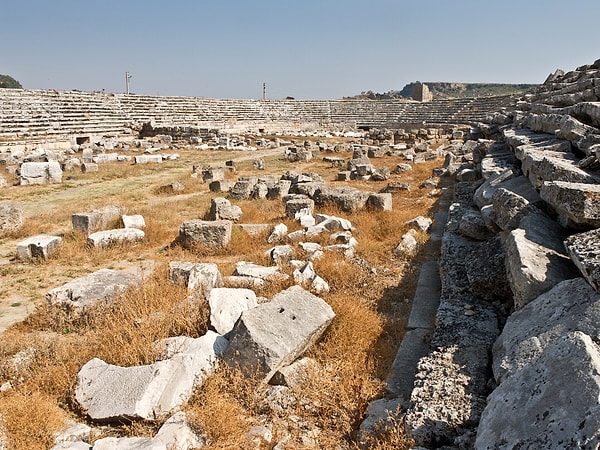
Adjacent to the theatre, the stadium measures 234 meters in length and 34 meters in width. This 12,000-seat venue was used for sporting contests and performances. The semicircular seating rows and entrance gates remain intact, illustrating the architectural ingenuity of the period. The design of the stadium demonstrates the advanced capabilities of Roman engineering.
7. Bath Complex

Located in the southern section of the ancient city, this large bathing structure offers insights into public health and social life during the Roman period. With sections such as frigidarium (cold), tepidarium (warm), and caldarium (hot), it was faithfully constructed according to classical Roman bath architecture. The remnants of the building’s heating system also showcase the technological advancements of the era.
8. Nymphaeum (Monumental Fountain)

Positioned at the beginning of the Collonaded Avenue, this magnificent three-tiered fountain served not only as a water distribution point but also as an ornamental monument. The statuettes, mythological figures, and intricate decorations on the Nymphaeum add elegance to the ancient city.
9. Basilica
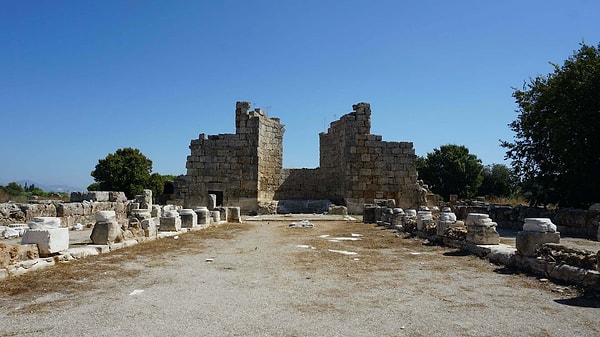
The basilica, one of the key structures documenting Perge's transition to the Christian era, illuminates the religious architecture of the time with its three-nave layout. Located in the southwest of the city, it was particularly active during the Byzantine period, highlighting the religious significance of Perge.
Source: Kültür Envanteri
Visit Information
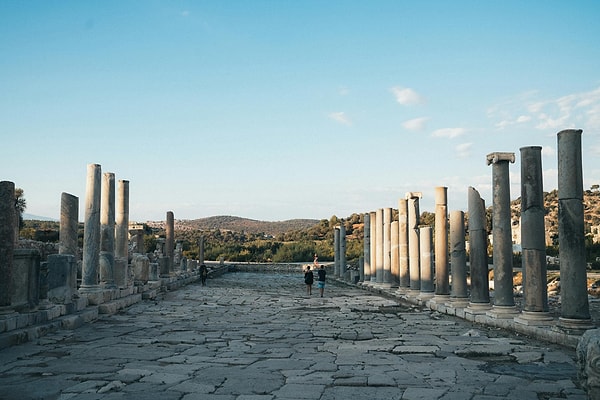
Location: Situated in the Aksu district, approximately 17 kilometres from the centre of Antalya.
Visiting Hours:
Summer (April 1 - October 31): 08:30 - 19:00
Winter (November 1 - March 31): 08:30 - 17:30
Entrance Fee: 400₺ as of 2025. Entrance is free for museum cardholders.
Transportation: The site can be reached by private car or public transport in approximately 20 minutes. Additionally, many tour companies regularly arrange daily tours to Perge.
Visit Guide to the Ancient City of Perge: Tips and Informative Hints
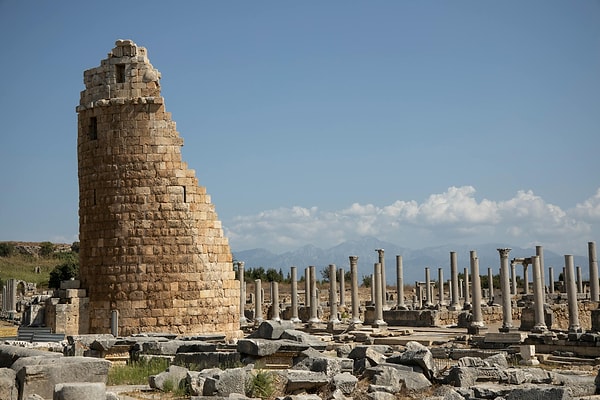
Transportation Options
By Private Vehicle: You can easily access the ancient city by continuing towards Aksu on the D-400 highway from the centre of Antalya. There is a large parking lot at the entrance.
By Public Transportation: You can go to the Aksu district with buses numbered LC07, LC37 and 519 departing from Antalya centre and reach Perge with a short walk.
By Tours: Guided tours offer a wealth of information and ease of transportation.
Best Time to Visit
The months of Spring (April-May) and Autumn (September-October) are ideal for both warmth and crowds. Those planning a visit during the summer months are advised to avoid midday, as the area is hot and requires walking in an area lacking shade.
Preparation Before Visit
Comfortable walking shoes, a hat and sun protection such as sunscreen are essential.
It is recommended to carry plenty of water with you.
There are no eating and drinking facilities in the ancient city; therefore, it is important to meet your needs in advance.
Sightseeing and Alternative Activities

Antalya Museum
Most of the sculptures and artefacts unearthed during the excavations in Perge are exhibited here. It has one of the richest collections of Roman sculptures in Turkey.
Kursunlu Waterfall
Located very close to Perge, this natural beauty is the perfect escape for those who want to cool off and meet nature after a trip full of history.
Aspendos Theater
Located about 35 minutes from Perge, Aspendos is one of the architectural wonders of antiquity, with its huge 20,000-seat theatre that still hosts concerts and shows.
Reasons to Visit the Ancient City of Perge
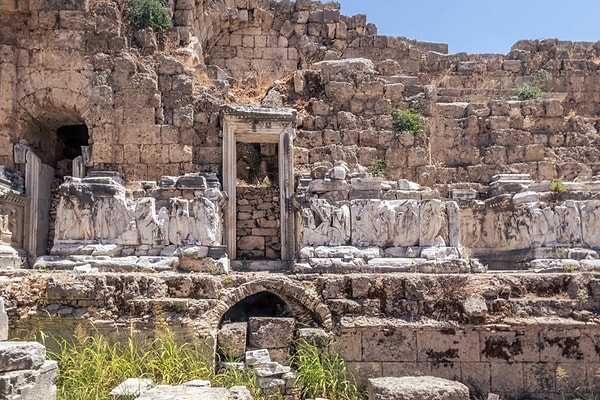
Historical Depth: The opportunity to witness the different civilisations of the ancient world and touch thousands of years of history.
Architectural Richness: Encounter the elegant and engineering marvel of the Roman era.
Paradise for Photography Enthusiasts: Columned avenues, majestic theatre and frames full of light and shadow.
Away from the Crowds: An ideal destination for those seeking a quieter, peaceful and authentic historical experience.
Perge Ancient City offers a travel experience intertwined with history, reminding you that Antalya is not only about sea, sand and sun. This ancient city, which has a quiet but deep narrative, whispers a story with every stone. If your route takes you to Antalya, be sure to add Perge to your list. Because this ancient city is not only an archaeological site, but also a living witness to the past. Perge is waiting for you for an unforgettable discovery!
Keşfet ile ziyaret ettiğin tüm kategorileri tek akışta gör!

Send Comment